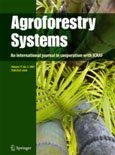In East Africa, lepidopteran stemborers such as Chilo partellus and Busseola fusca are major constraints to production of maize, which is the main staple food crop in the region. Cereals depend on silicon (Si)-based defences to fight off herbivores. Using altitudinal ranges in the East African highlands as ecological surrogates for inferring climate change, it was shown that Si concentrations in soil and maize decreased with altitude. This was attributed, in part, to low temperatures at high altitudes, which negatively affected Si assimilation by maize. Experiments showed that B. fusca was more susceptible to Si than C. partellus. Hence the predominance of B. fusca in the highlands and of C. partellus in the lowlands could be partly explained by altitudinal differences in Si concentrations in maize plants. Therefore, a rise in temperature due to climate change should enhance the plants' Si assimilation and as a result C. partellus might move into the higher altitudes and increasingly displace B. fusca. © 2016 Elsevier B.V.
DOI:
https://doi.org/10.1016/j.agee.2016.03.040
Altmetric score:
Dimensions Citation Count:

Publication year
2022
Authors
Calatayud, P.; Njuguna, E.; Mwalusepo, S.; Gathara, M.; Okuku, G.; Kibe, A.; Musyoka, B.; Williamson, D.; Ong’amo, G.; Juma, G.; Johansson, T.; Subramanian, S.; Gatebe, E.; Le Ru, B.
Language
English
Keywords
global warming, alkaloids, terpenoids, monocotyledons, metabolites, dicotyledons, climate change
Geographic
Kenya, Uganda, Tanzania























